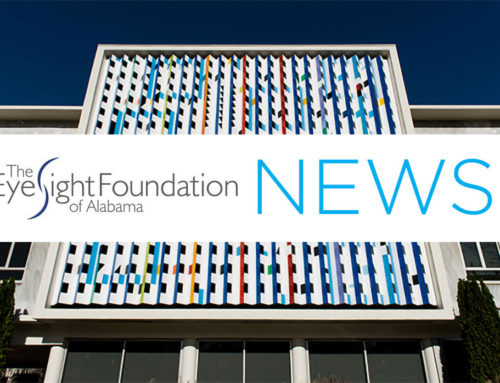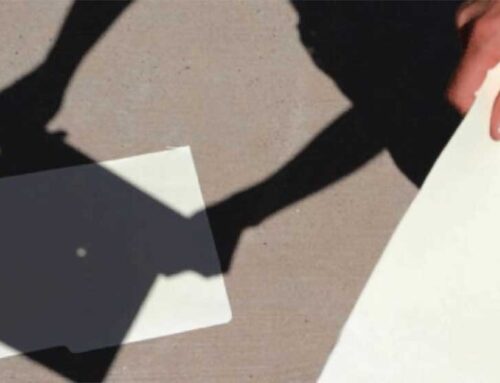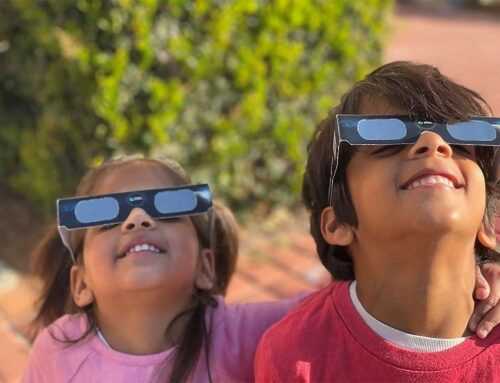Jeff Haddox did not originally intend to found a nonprofit and dedicate his life to helping children receive eye care. He was very happy and fulfilled as an eye research scientist, studying diseases of the eye to help discover and perfect treatments for corneal inflammation.
For over 20 years, he spent his time in the laboratory, first as a researcher and then as the director of the eye research laboratories. In the late 1990s, though, “it became clear to me that children’s eye care was often ignored,” he said. It wasn’t unusual for a child’s vision problem to go unnoticed until later in childhood. “Children with poor vision often have no frame of reference to know they aren’t seeing well. If they don’t see leaves outside on a tree, they don’t know how to explain the problem.”
In 1997, Haddox created a nonprofit to address the problem, starting small and then growing into a national program because of the sheer need. In 1997, Sight Savers of Alabama served 11 children in the program, helping identify vision problems and providing corrective resources. By 1999, the organization was serving several hundred children a year and growing fast, expanding beyond Jefferson County and adjacent counties.
With continued growth in 2003, Haddox gave up his research and devoted full-time to Sight Savers, whose upward trend showed no signs of slowing. In 2007-08, the need was so evident that Sight Savers of Alabama became Sight Savers America (SSA), and it expanded well beyond Alabama’s borders into 15 other states.
Early boost

In the beginning, the immediate need was funding to get the program going. In 1997, a group of volunteers ran a concession stand at the Talladega SuperSpeedway. It raised almost $3,000 and helped build the program and serve the first children.
There was a quick recognition that foundation grants would be needed to move forward. “Our goal was that every child in the state of Alabama would receive the eye care they needed,” Haddox said.
By 1998, he met Torrey DeKeyser, the executive director of EyeSight Foundation of Alabama (ESFA), and they talked about a high-tech vision aid that was life changing for children with severe visual impairment, allowing them to see what they couldn’t before and be able to read and write.
The eventual outcome of that conversation was that ESFA became Sight Savers first large funder, but more than that, it became a catalyst. ESFA granted $20,000 and asked that four other organizations follow their lead. “It opened the door in the funding community,” Haddox said. “The EyeSight Foundation was the true catalyst that caused that to happen, and we have received more and more funding support as the years go on.”
The next boost came from Quarterbacking Children’s Health Foundation (formerly Crippled Children’s Foundation/Monday Morning Quarterback Club), which gave $100,000 to ESFA to help SSA expand their program. “Torrey’s proactive advocacy on our behalf” along with ESFA board members in the early days, like Hall Thompson, Hartwell Davis and Jim and Alison Gorrie led to a state appropriation by then Gov. Bob Riley. Because of their advocacy, “they opened the door for us in other places,” Haddox said.
Team effort continues
A team approach has been a winning game plan for Sight Savers America when it comes to funding. Those early day heroes like Thompson, Davis, Gorrie and DeKeyser led the way and continue to provide funding for this national program.
Michelle McIntyre, executive director of Quarterbacking Children’s Health, the funding arm of the Monday Morning Quarterback Club, talked of those early days as the Quarterback Club transitioned its gift-giving to children’s health.
Organized in 1939, the Quarterback Club began as a fellowship organization for “football lovers.” By 1969, its mission grew to help eradicate polio, and it raised $3 million to build the Crippled Children’s Clinic and Hospital, now a part of UAB’s medical center.
In 2020, that charitable segment of the club became Quarterbacking Children’s Health Foundation, which has given $30 million over its lifetime to children’s health charities.
Its first emphasis is on Children’s of Alabama. Its second? EyeSight Foundation of Alabama and partnering organizations. Starting with that gift to ESFA in 1981, its giving to children’s eye care in Alabama has exceeded $4 million.

The Foundation is the “umbrella for all charities supporting children’s health,” McIntyre explained. Sight Savers and EyeSight Foundation are the leaders in filling eyecare needs in the state on a large scale. “They have done the most work for the most kids in the state,” she said.
The stages of life that they work through in identifying needs of children, especially in the Black Belt, McIntyre said, is impressive. “What they do is really important. They follow up throughout to make sure they are fulfilling those needs and improving their lives.”
Calling the work with Sight Savers and EyeSight Foundation“supporting boots on the ground,” McIntyre described the Foundation’s partnership with them as “a perfect fit for what our organization is. We are thankful for everything Sight Savers does through the EyeSight Foundation. They are a model for other states.”
The work
Because of the leverage the financial and advocacy of the EyeSight Foundation and Quarterbacking Children’s Health Foundationsupport provides, Sight Savers has been able to make tremendous strides over the years.

By the numbers, its database has grown to over 700,000 children receiving case managed follow-up eye care statewide in Alabama preschools, kindergarten, second grade, fourth grade and, in some cases, other grades through high school. Sight Savers has partnered with Vision Research Corporation, Impact America, Alabama Institute for Deaf and Blind, public schools, UAB Department of Ophthalmology, UAB School of Optometry, private practice optometrists and ophthalmologists and many other community organizations to provide eye care for children in Alabama. Around the state, needed eye exams, eyeglasses, medications, vision therapy, visual assistive technology, surgeries and all other eye care treatments are provided.
One of its inspiring breakthroughs has been the ability to provide devices called electronic video magnifiers or EVMs—high-tech vision aids with the capabilities of increasing contrast and magnifying 120 times—dramatically improving the vision of individuals with low vision who could not read or see things others take for granted. One in 4,000 children need but can’t afford this type of electronic video magnifier, and Sight Savers has been able to provide 2,600 nationally, including 500 Alabama children and 100 adults. “No one else does that,” Haddox said.
“There is nothing like going to a kid’s home or into a clinic to deliver one of these devices,” he said. “For the first time they can see their mother’s face, they can see a squirrel in the tree, and they can see to read. They are so excited. Their life changes almost instantaneously.”

Hero for Sight a rewarding celebration
Rather than funding their work through a series of fundraisers, The Sight Savers America Hall W. Thompson Hero for Sight Awards Luncheon has become an annual event – not only to raise funds to continue and grow the work – but to recognize those who have had a major impact on eye care efforts in Alabama.
It is seen as a time for the major players in eye care community to come together with businesses and community organizations in celebration of challenges met through their heroic efforts and partnerships with Sight Savers.
Begun in 2014, it recognizes an individual or organization whose impact on children’s eye care has been “lasting and profound.”
On its first floor for public display, UAB Callahan Eye Hospital dedicated a 25-foot tribute wall to Sight Savers America, the centerpiece of which is original artwork created by an artist with severe visual impairment, the current recipient of the award and recognition for the artist. It includes a plaque sharing the mission and scope of Sight Savers’ work, a plaque honoring prominent businessman Hall Thompson and his role in improving children’s vision in the state and a plaque of past recipients.

Past recipients are: Songs for Sight, Hartwell Davis Jr., business executive and past president of Crippled Children’s Foundation and past chairman of the EyeSight Foundation of Alabama; Monday Morning Quarterback Club/Crippled Children’s Foundation, Doyce Williams, president and CEO, Alabama Eye Bank; Edwina Taylor, executive director, Cahaba Valley Health Care; and Dr. Kathy Weise, director of Pediatric Optometry, UAB School of Optometry.
In 2020, the award named Torrey DeKeyser, executive director of EyeSight Foundation of Alabama, as its recipient, but due to COVID concerns, the ceremony will take place in 2021.
The 2021 recipient is the late William “Bill” Burrus, chairman of the board for Sight Savers America, who will be honored posthumously August 3 along with DeKeyser.






